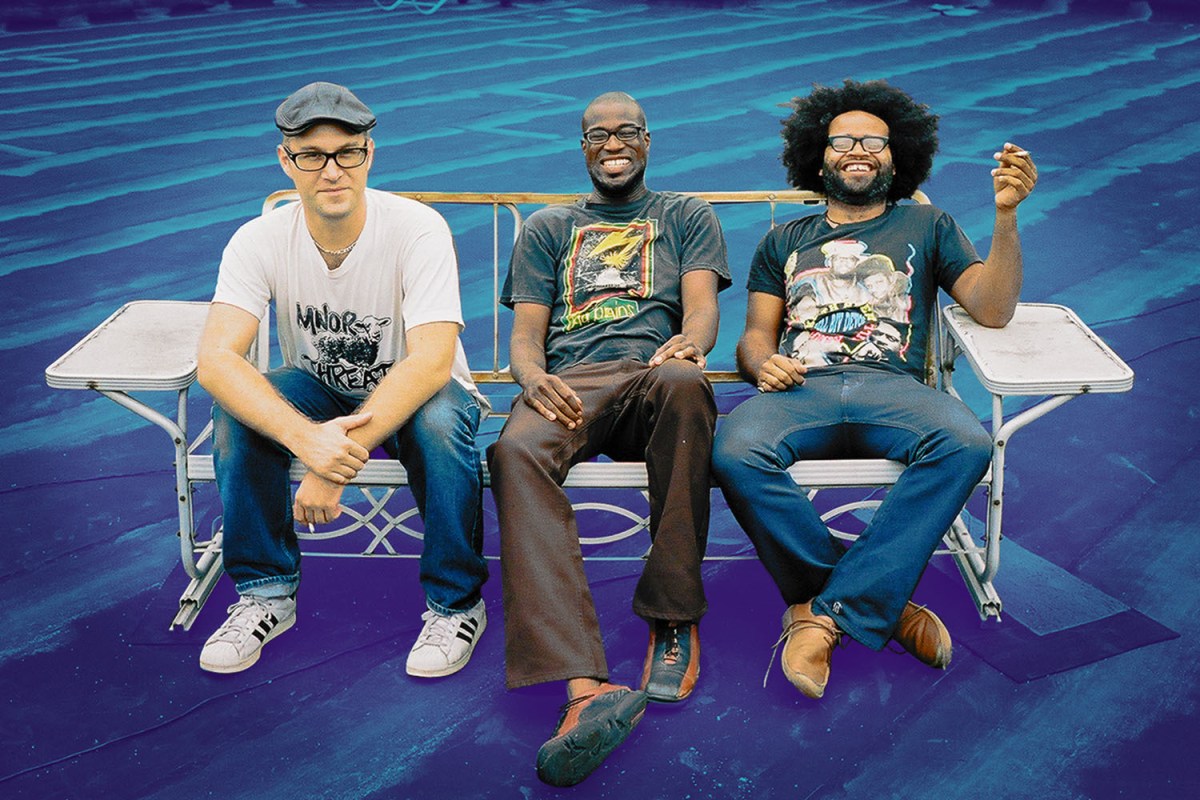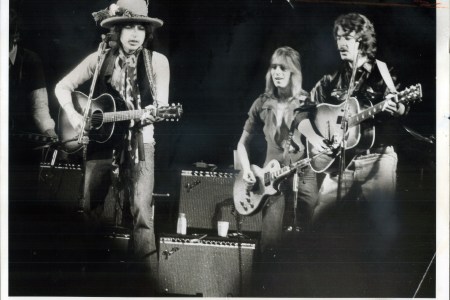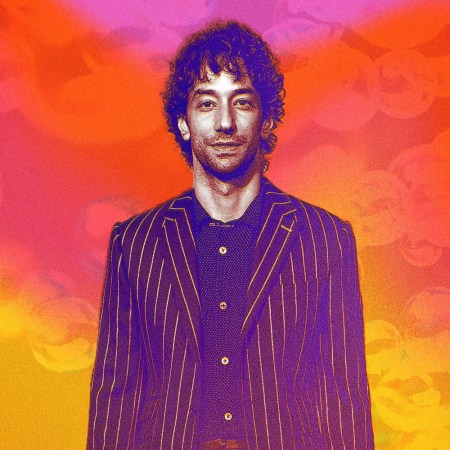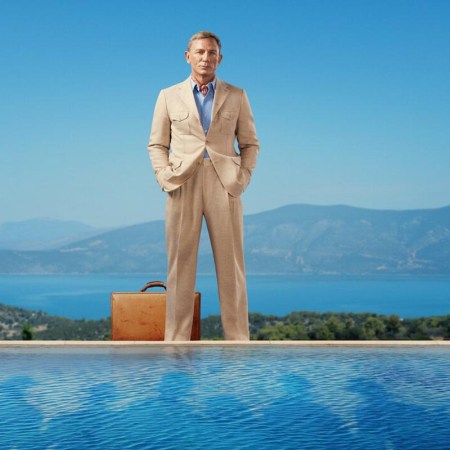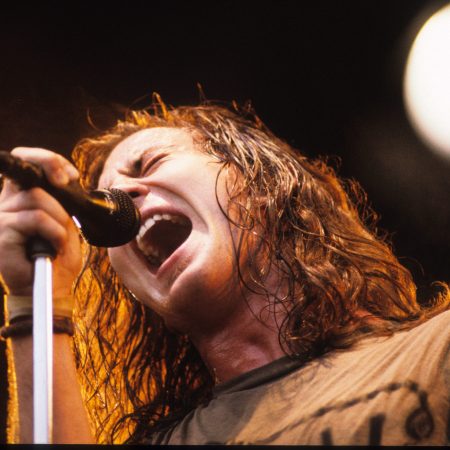On a Zoom call last week, Will Lovelace apologized for the fact that he and his fellow documentary director Dylan Southern might sound, in his words, a little “wooly-headed.” Their upcoming movie Meet Me in the Bathroom, a cinematic version of the oral history book of the same name from 2017, had its premiere in Los Angeles the night before.
Being hungover is on brand for the film’s subject matter: the rowdy days of the early 2000s New York City music scene. The movie follows the beginnings of The Strokes, Interpol, the Yeah Yeah Yeahs, TV on the Radio, LCD Soundsystem and The Rapture (the Moldy Peaches, who never quite blew up in the way these other groups did, get some screen time too), who all formed in the same period of a few years and influenced each other as part of one of the last tight “scenes” to produce multiple rock bands with a global reach.
While journalist Lizzy Goodman talked to all of the artists for her book, Lovelace and Southern — who hail from Liverpool and have previously directed Shut Up and Play the Hits, about LCD Soundsystem, and No Distance Left to Run, about a Blur reunion tour — had the task of finding video footage from the time period, before the rise of YouTube. And it’s quite a feast for the eyes, especially for fans of the bands. There are scenes of Karen O developing her raucous onstage style and getting bruised (and worse) by taking out her anger in performances. Ryan Adams is portrayed as a bad influence on Albert Hammond, Jr., supposedly supplying him with heroin (something Adams denies). James Murphy waxes neurotic about his life and the impact of ecstasy inside the earliest iterations of the famed DFA studios. Then, of course, there’s plenty of early concert footage.
But from the first frames, Southern and Lovelace make it clear that the story is about far more than the individuals involved: it’s also about a moment of massive technological, political and social change; gentrification and the end of an era for artists in New York; and the very different last days of the pre-internet music industry. (Spoiler: Napster makes a nefarious appearance.)
The directors spoke with InsideHook just before heading to New York, where the film had its East Coast debut in a showing at Webster Hall this weekend. The movie hits some theaters nationwide on Friday and will then be streamable on Showtime starting Nov. 25.
InsideHook: You guys were in an interesting position to see this story play out, being in England, where these bands were hailed right away as the next big things. What was it like, at the time, watching this scene explode from across the Atlantic?
Dylan Southern: Well, the English music press really, really got behind it, as it was happening in New York. We were reading about it in NME and we were hearing those records. And most of the bands toured the U.K. very, very early on.
In a weird way, the New York thing was refreshing, because English guitar music had kind of petered out post-Britpop, and there was nothing really happening. So I think it was a combination of like, New York was fairly exotic, and the U.K. press really needed something to get behind. I remember we didn’t get tickets but being very jealous of the people who got to see The Strokes on that first U.K. tour. But yeah, it kind of almost felt like it was happening in the U.K. as well.
The film is of course about these bands and their rise and their music, but it’s also about so much more: the evolution of New York City and the music industry, gentrification, the concept of an artistic life — what do you see as the big themes the movie is addressing?
Southern: One of the things that first fascinated us with the book was, when you read it, number one it’s quite sobering because you realize how much time has passed since then. To look at the world today, and the world of the early aughts, they’re completely different worlds. And I think we wanted to make a sort of time capsule. We knew we couldn’t get everything that’s in the book into the film, we knew that we couldn’t be as granular, but we could do a good job of sort of positioning the audience in that time period… everything’s starting to kind of change seismically, politically and technology wise.
To dig a little deeper into all of that, what are one or two specific things within those huge changes that you found most interesting?
Southern: I think the technological side of things was really interesting, which is why we have like Y2K in there in the beginning. Which sort of was the start of technological anxiety. It looks ridiculous now, when you see people talking about Y2K — but there’s also kind of a good reason for people to be anxious about technology, because look where we are now, you know, addicted to our phones.
Will Lovelace: Also, we were exploring the idea of a moment, a musical moment happening in a place at a certain time. That feels like that was one of the last times that’s happened.
Southern: One of the questions we asked ourselves was, “could it ever happen again?” And I think, unfortunately, it probably would never be able to happen like that, just because of how the world has changed. We don’t consume music in the same way; we don’t make music in the same way. The way we sort of engage culturally has changed so much. For a scene to emerge organically in a place, all the things that cause that aren’t quite there anymore. So part of the reason we sort of framed it in the poem [the film starts and ends with a montage of New York City imagery and voiceover of a Walt Whitman poem about his love for the city] was to just to establish New York as this sort of beacon call to artists. It’s a city that has a very specific musical and cultural heritage that kind of attracts a certain type of artist. And then the reason we repeated it at the end was sort of to ask the question: having come to the city and with the scene emerging, have the artists become as ingrained as those other ones that drew them there in the first place? And that’s a question for the audience to answer really.
Some of the footage of Karen O going wild on stage reminded me of the more recent moment when Phoebe Bridgers smashed her guitar on TV, and how everyone went nuts about that. It felt like Phoebe was filling a void — of the rocker who exemplifies the sex, drugs and rock and roll lifestyle — which seems to have died out with this crop of early 2000s NYC bands, for better or for worse. Would you agree?
Southern: Yeah, I would say so. I’m sure it’s happening somewhere, in some scene or with some bands, but I’d say that kind of rock and roll lifestyle seems to have petered out a little bit, or have changed. I’m sure Ed Sheeran’s not banging smack up his veins.
5 Simple Rules for Making a Great Music Documentary
Bob Dylan and Aretha Franklin make for compelling subjects, but how do other directors pull off making interesting concert-based films?There’s some incredibly candid footage in the film: Paul Banks on the street on Sept. 11, James Murphy on drugs at a club, Julian Casablancas getting angry with his bandmates. Where did all of it come from?
Lovelace: We didn’t know, when we decided to make this film, what existed and what didn’t exist. I mean, you knew some of the more famous stuff, but we hoped to see people filming. And we were doing that on a smaller scale, doing similar things up in Liverpool, filming bands. So there was always some guy with a camera. And quite early on, we started looking at photographs of some of the shows, and you could see people in the audience, the odd person with a camcorder. We thought, we need to try and figure out who that person is and try and get in touch with them. So there’s a lot of detective work.
Southern: We’d use the Wayback Machine to access web forums and find people who were into the scene at the time, then try and find their current online presence.
Lovelace: And it was a weird kind of time because, with YouTube not coming along until 2006, there was this whole period where people hadn’t uploaded stuff to [the internet], which is amazing once you get hold of it, because no one’s seen it. But it was pretty tricky to sort of search stuff out. And it wasn’t just us, it was a whole team of us doing it, back in London.
Then when we started making this film, everyone went into the lockdown with COVID. In a lot of ways, it was very tricky to make a film in that time. But what helped was people were stuck in apartments and were happy to look through old boxes of photographs and tapes and that sort of stuff. Most of the bands also had somebody who was filming with them, and they were very generous in sharing with us.
Southern: I think also in that period towards the end of the ’90s and the start of the 2000s, camcorders and stuff became a bit more affordable. And if you’re in a band, there’s always gonna be a friend who’s just sort of, you know, wanting to be a filmmaker, who’s there to kind of capture stuff.
What are some of your favorite moments in all of it?
Lovelace: The earliest scenes with the Moldy Peaches are really evocative and we loved it when we got that footage of them filming themselves recording in their apartment.
Is that just a random person who walks into their apartment? Or is that a friend or someone who staged walking in?
Lovelace: That was their neighbors. I think that the neighbors weren’t too keen on them making loud noise in their apartment. The parking lot show in Williamsburg in 2002 — when we found lots of different footage from that show, that was also an amazing thing to be able to have in the film, because it feels like a big moment in that whole story ready for lots of the bands.
Southern: And getting access to the rushes from some of the music videos, like the green screen stuff for “12:51.” Getting the rushes to the “Maps” video was amazing, because we use that iconic close-up on Karen. Sometimes that is the most revealing stuff — how people are in between the takes of music videos tells you a lot more than the finished article, I think.
9/11 also plays a huge role in this film — what kind of effects did you see it having on the musicians?
Southern: We knew right from the start that 9/11 would play a part in the film, but that we’d have to be kind of sensitive about it in a way. We only wanted to include it if it was relevant to this scene and the bands in it. And I think what we loved about the way 9/11 is treated in the book is that over the past 20 years, we’ve all seen the ramifications of 9/11. And we know like the political ramifications, we’ve seen a lot of that stuff. But I’d never really seen 9/11 dealt with through the prism of like creative people, or people who make art for a living. So that was really fascinating. And our intention was to kind of view it through that prison as well. So when we found the footage of Kimya [Dawson of the Moldy Peaches] singing “Anthrax,” you know, that is so emotive. The song said more than we probably could have gotten in an interview. The fact that there was footage of Paul on the day of, you know, walking the streets, and the fact that he went off and gave blood — I think that in the aftermath of it, there was sort of notion that a lot of people were like, “Well, if this can happen in my city, fuck it, I’m just gonna double down and throw everything into creating stuff.” That was really interesting.
This article was featured in the InsideHook newsletter. Sign up now.
